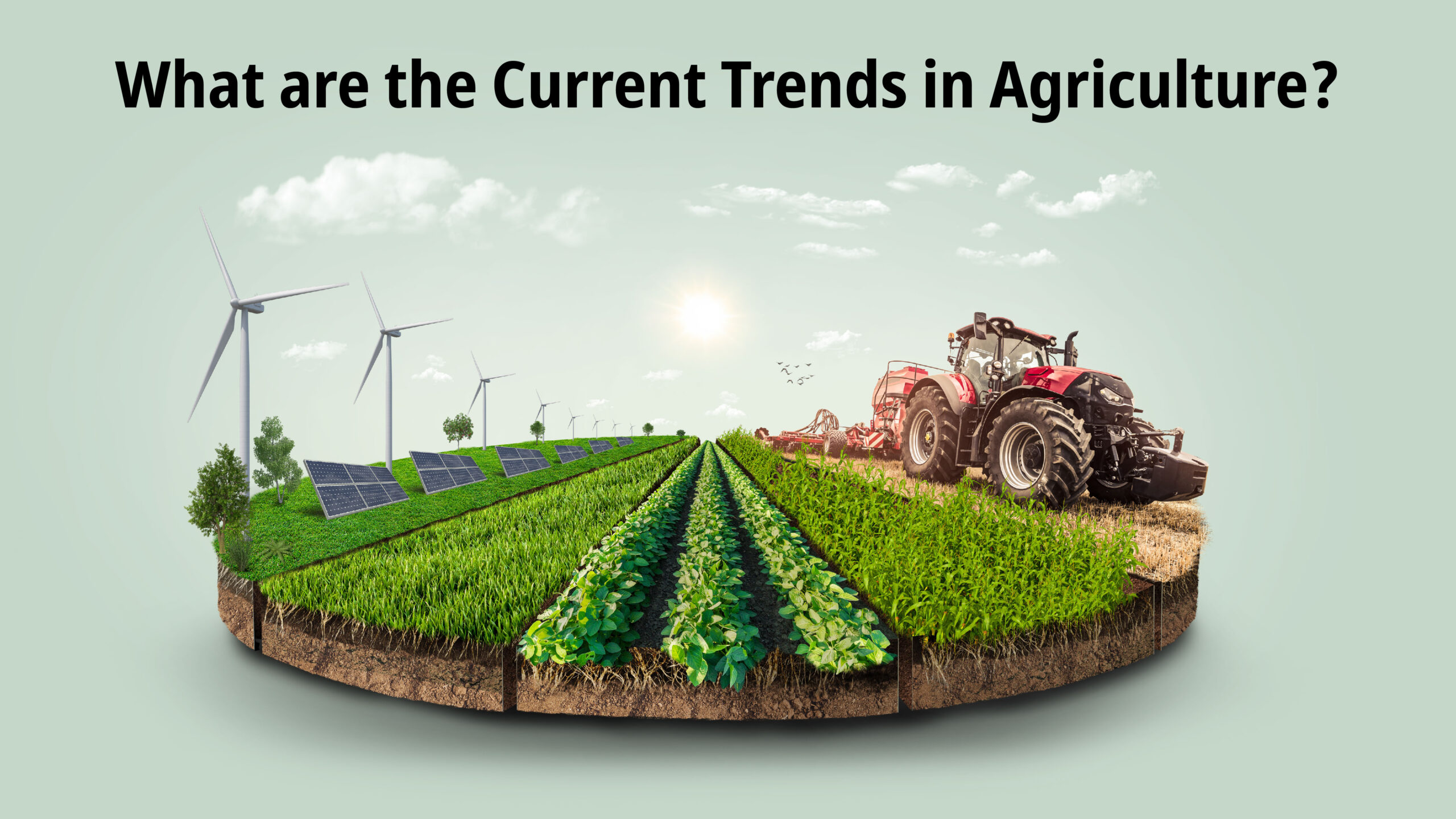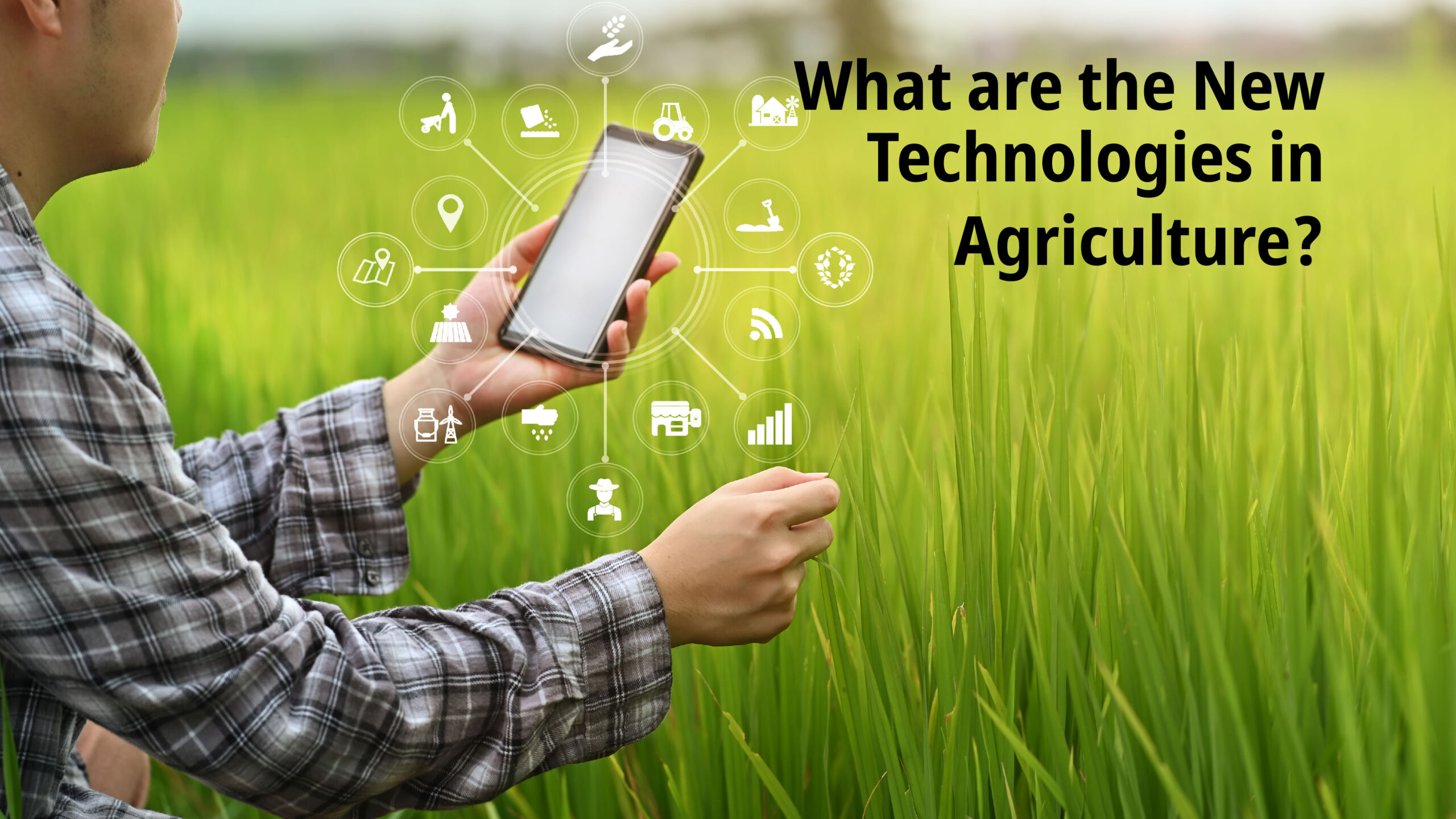The year 2023 posed both challenges and triumphs for the agriculture sector. Globally, the industry grappled with adapting to extreme weather events and overcoming supply chain disruptions, particularly concerning essential inputs such as fertilizers. Aligned with the overarching goal of feeding the world’s expanding population, agronomic researchers and engineering teams collaborated to pioneer smart Agtech tools and technologies. Their goal was to amplify the efficiency and productivity of production agriculture, marking a significant stride in addressing key agriculture trends.
As we transition into 2024, the agricultural landscape anticipates further developments in line with the pivotal themes of the preceding year. Key trends in agriculture for 2024 are poised to expand upon the foundations laid in 2023, with a heightened emphasis on emerging technologies such as generative artificial intelligence (Gen AI), and precision agriculture.
What are the Current Trends in Agriculture?

Food demand is expected to rise 70% by 2050 in tandem with the world’s fastest population growth. With a UN study revealing that approximately 9.9% of the global population continues to suffer from hunger, the task of providing sustenance to nearly 10 billion individuals by 2050 appears to be a formidable challenge. We must rely on technological innovation in agriculture since changes in the environment are unpredictable.
Fortunately, the signals thus far point to hope. It won’t take three decades to observe how cutting-edge agricultural techniques can impact future human existence. Without further ado, let’s take a closer look at the top four agriculture trends in 2024 and beyond.
1. Agri-Robots
2024 sees Agri-Robots making a substantial impact on agriculture trends. Labor shortages are a major issue for farmers, and this problem is exacerbated in large field operations. In the fields, farmers are now deploying robots to perform routine activities. They use smart agricultural tools for harvesting, such as GPS-enabled autonomous and semi-autonomous tractors. Auto-steer technology is already available on tractors for improved field navigation.
Furthermore, robots are used in automated livestock management systems which have enabled farmers to concentrate on increasing overall output instead of worrying about delayed farm operations.
2. Generative AI
Among the myriad agriculture trends in 2024, one of the most influential is the role played by Generative AI, commonly known as Gen AI. The potential impact of Gen AI on the global economy is currently being estimated in the trillions of dollars. This presents a historic opportunity to streamline processes, reduce costs, and, crucially, foster innovations by enhancing modeling for more informed decision-making. Companies are already harnessing Gen AI through Digital Crop Advisors, empowering agronomists to distill vast agronomic data into actionable recommendations for farmers.
These tools elevate crop management by scrutinizing extensive agronomic data, offering AI-supported insights to optimize production practices. This enables farmers to comprehend patterns influencing the performance of specific crop varieties on their farms and monitor climate trends, thereby enhancing their resilience to the ever-changing climate conditions.
3. Precision Agriculture
Environmental degradation demands the adoption of long-term sustainable solutions across all industries. Site-specific crop management (SSCM), often known as precision agriculture, is an example of this.
It’s a technique in which farmers utilize precise amounts of inputs like water, herbicides, and fertilizers to improve produce quality and output. Various sections of a field have different soil qualities, receive different amounts of sunlight, and have different slopes which determine its inputs.
4. Controlled Environment Agriculture
Among the key agriculture trends in 2024 is the prominence of controlled environment agriculture. Traditional farming methods are frequently disrupted by changing and intense weather conditions. Furthermore, cultivating crops in densely populated areas, deserts, or other undesirable environments is difficult. Farming under controlled environment agriculture (CEA) solves this problem.
Crops in CEA are exposed to a specific amount of light, temperature, humidity, and nutrients. Indoor farming, vertical farming, and greenhouses are just a few examples of varied growth settings.
Techniques such as hydroponics and aeroponics, which involve growing soilless plants in a liquid nutrient media or stream, are becoming more widely used. Aquaponics is another such technology, in which plants and fish are both grown at the same time. Plants supply nutrition to fish, and fish filter the water for the plants. Pests and illnesses are reduced, yields are increased, and sustainable agricultural practices are established using CEA methods.
5. Drones
Drones, also known as unmanned aerial vehicles (UAVs), assist farmers in effectively overcoming several problems. Drones acquire raw data, which is then converted into information helpful for farm monitoring. Aerial photography and surveying of adjacent and far-flung fields is made easier with drones equipped with cameras.
This information helps to optimize the use of fertilizers, water, seeds, and pesticides. Drones are also utilized for livestock tracking, geofencing, and grazing monitoring, courtesy of GPS technology. This, in turn, has resulted in becoming one of the significant agriculture trends in 2024 and beyond.
What are the New Technologies in Agriculture?

New technologies are revolutionizing agriculture, addressing the need for sustainability, increased productivity, and efficient resource management. Here are some notable advancements shaping the future of farming:
- Precision Agriculture: This approach employs sensors, drones, and GPS to gather data on soil conditions, moisture levels, and crop health. By optimizing the use of resources like water, fertilizers, and pesticides, farmers achieve higher productivity and reduce environmental impact.
- Internet of Things (IoT): Integrating connected devices and sensors, IoT technology enables real-time data collection on factors such as temperature, humidity, and soil moisture. This empowers farmers to monitor and manage crops effectively, with automated systems for irrigation, pest control, and livestock management, resulting in improved efficiency and cost reduction.
- Artificial Intelligence (AI): AI is applied in agriculture to analyze large volumes of data and provide valuable insights. Machine learning algorithms identify patterns, optimize planting schedules, detect diseases, and manage crop yields. AI-powered systems automate tasks like sorting and grading produce, boosting productivity and reducing labor requirements.
- Robotics and Automation: Robots are increasingly used for planting, harvesting, and crop monitoring. With precision and efficiency, these machines reduce the need for manual labor and increase productivity. Automation allows round-the-clock monitoring and data collection, leading to better decision-making.
- Blockchain Technology: Blockchain enhances transparency and traceability in the agricultural supply chain. By creating an immutable and decentralized ledger, it tracks the origin, quality, and movement of agricultural products, ensuring food safety and reducing fraud. It also enables fair and efficient transactions between farmers and consumers.
These technologies are transforming agriculture by addressing challenges such as population growth, climate change, and resource scarcity. Some of the prominent agriculture technology solution companies are FarmLogs, Climate Corporation, John Deere, Blue River Technology, Indigo Ag, and many more.
Final Thoughts
In wrapping up our exploration of agriculture trends for 2024, it’s evident that sustainable agriculture trends are shaping the future of this crucial industry. As we navigate the dynamic landscape of these trends, it becomes clear that a commitment to sustainability is paramount. From technological advancements to eco-friendly practices, the future trends in agriculture not only reflect innovation but also a collective effort towards a more resilient and environmentally conscious sector. Embracing these agriculture trends in 2024 ensures a harmonious balance between productivity and environmental stewardship, marking a promising trajectory for the future of agriculture.




